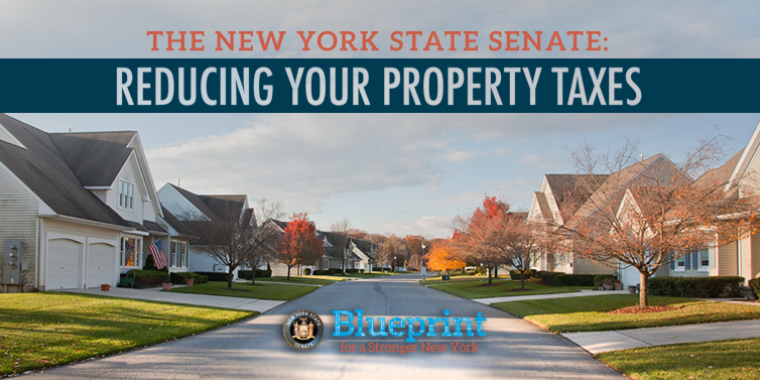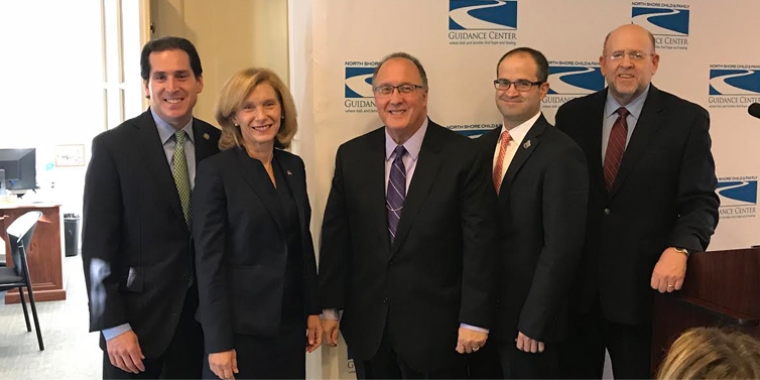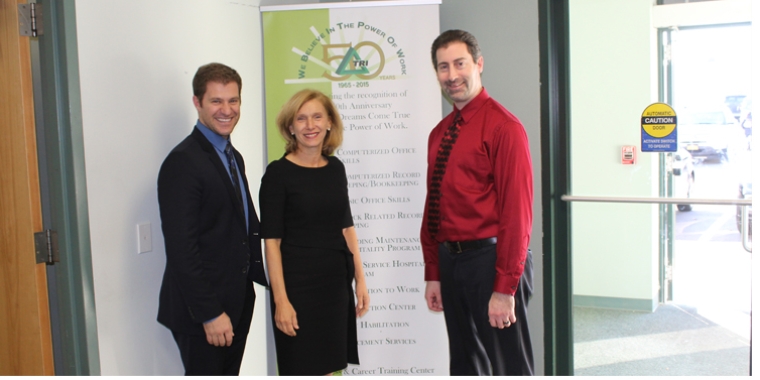
Senate Passes Senator Phillips’ Legislation Expanding STAR Program As Part Of The Majority’s Package To Make New York More Affordable
May 7, 2018

Senator Elaine Phillips announced today that the New York State Senate has passed her legislation significantly expanding the STAR property tax relief program as part of the Senate Majority’s sweeping affordability package that focuses on property taxes, energy costs, unfunded mandates, and other drivers that are making it harder for middle-class families to succeed.
“The cost of living in New York, especially on Long Island, continues to rise and it is time we provide the hardworking taxpayers of our state with much needed and deserved financial relief,” Senator Phillips said. “By significantly expanding the already successful STAR property tax relief program by 25 percent, we are reinforcing our commitment to reduce the property tax burden and make New York more affordable for citizens to live and raise families.”
The bill, S.8398, provides additional property tax relief for all STAR-eligible New Yorkers by increasing the amount of the property tax relief credit by 25 percent. This bill expands an already successful program first created by Senate Republicans that is helping to reduce the property tax burden and helps mitigate tax savings that could be lost as a result of the recent federal State and Local Tax deduction. The increase would take effect in the 2019 tax year and save an expected $331 million by 2020, $1.6 billion annually thereafter.
The Senate Majority’s affordability package would result in billions of dollars in savings annually for taxpayers in the form of new and expanded property tax cuts, including the state assuming local Medicaid costs. The package also includes eliminating costly energy taxes; creating new tax cuts for seniors to prevent them from moving to another state; requiring a supermajority vote when taxes are increased by state and local governments; and preventing unfunded mandates from being passed on to the taxpayer.
Cutting Local Medicaid Contributions to Give Direct Property Tax Relief
The largest savings from this package comes from two initiatives that require the state to assume the local share of Medicaid payments. Since the enactment of the Medicaid program in 1965, counties and the City of New York have been required to share in both its cost and administrative operation. The State is responsible for program design and, over the course of several years, the overall administration of the program has been gradually shifting to the state. The counties’ Medicaid share is currently capped at 2015 levels and the current local contribution amount to the state for Medicaid is a combined statewide total of $7.63 billion.
The first bill, S.8411, reduces the local Medicaid contribution by 20 percent a year over five years for all counties outside New York City. The counties must then enact dollar-for-dollar reductions in property taxes, resulting in direct taxpayer savings of up to $451 million in the first year alone, and $2.3 billion when fully effective.
The second bill, S.8412, reduces counties’ contributions by 10 percent a year over 10 years and again requires that $2.3 billion in cumulative savings to be returned dollar-for-dollar back to property taxpayers. In New York City, the contribution would also be reduced by up to $2.3 billion and returned to taxpayers in the form of a dollar-for-dollar reduction in the personal income tax. In addition, the city would be required to enact a two-percent property tax cap similar to what is already in effect in the rest of the state and which has already saved taxpayers $23 billion to date.
Providing $280 Million in New Energy Tax Relief
S.8399: Saves business and resident ratepayers by phasing in a new elimination of the two-percent Gross Receipts Tax on utility bills. S8407 eliminates the base underlying 18-A assessment tax and shifts the cost of the Public Service Commission to the General Fund. Together, they will result in needed reduction in consumers’ utility bills and provide a total savings of $280 million.
Eliminating Property Taxes for Seniors to Keep Them in New York
S.8406: Creates a senior school tax rate that phases in a yearly 10 percent reduction of school taxes, based on age of the eligible senior, starting at age 70 to reduce the burden that seniors face when paying the school tax portions of their real property tax bills. By reducing the financial burden of home ownership for seniors, this bill may make it more affordable for a larger number of seniors to stay in New York State instead of relocating to states with less burdensome real property tax rates. The bill would save $274 million by 2022 and $556 million by 2023.
Increasing Retirement Exemptions to Make Living in New York More Affordable
S.414A: Helps more seniors save money and choose to stay in New York during their retirement by increasing the private pension and retirement income exclusion from $20,000 to $40,000 for single taxpayers and up to $80,000 for married taxpayers, over three years. This would be the first increase to the exempt amount for private pensions and retirement since 1981 and will save retirees approximately $275 million.
Requiring a Supermajority for New Tax Hikes
S.8401: Requires a two-thirds vote from each house of the state legislature to increase, impose, or extend taxes, a two-thirds vote from local legislative bodies to increase, impose, or extend local taxes, and a two-thirds vote from local legislative bodies requesting an increase, imposition, or extension of taxes by the state legislature. This bill holds elected officials more accountable to the state's taxpayers, both at the state and the local levels of government, by requiring a supermajority. S.8402 would also accomplish the supermajority requirement for state and local tax laws by proposing a constitutional amendment.
Preventing Unfunded Mandates /Local Tax Increases
S.8400: Proposes a constitutional amendment to reduce property taxes by prohibiting many of the unfunded mandates that place a hardship on local governments. The bill would prevent state government from passing a financial burden of new mandates to local governments without financial assistance, preventing them from being forced to decide between taking resources from already strained local programs and redirecting those funds to the latest unfunded mandate, or turning to already over-burdened taxpayers for additional support.
Making Education More Affordable
S.7783: Makes New York’s tax law consistent with changes to 529-plan tuition eligibility that recently took effect on the federal level. The federal Tax Cuts and Jobs Act enacted last year expanded the use of 529 plans to include tuition expenses for attendance at elementary or secondary schools, but existing tax law in New York may not allow such expenses to be eligible. This bill enables 529 plan distributions used to pay for elementary or secondary school tuition expenses after January 1, 2018, to have the same tax benefits as distributions used for attending an eligible institution of higher education.
The package builds upon the Senate Republican Majority’s record of success in securing new and needed tax relief. This year alone, the conference led the way to include a provision in the budget that will help protect taxpayers from the negative impacts of federal tax changes by enabling a decoupling of the state and federal tax codes to prevent New Yorkers from taking a $1.5 billion state tax hit as a result of the SALT deduction changes. Earlier this year, the Senate also passed legislation (S1207)to make the property tax cap permanent and to enact a two-percent spending cap into law (S365).The self-imposed spending cap has already saved taxpayers $41 billion to date.
Share this Article or Press Release
Newsroom
Go to Newsroom
Winter Weather Contacts & Information
December 8, 2017

Senator Elaine Phillips Tours TRI Business & Career Center
December 8, 2017

